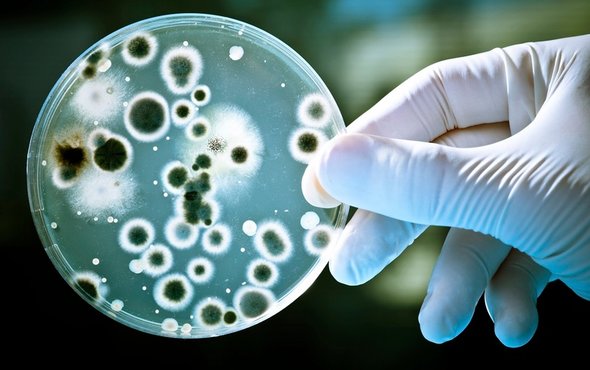(单词翻译:单击)
听力文本
This is Scientific American — 60-Second Science. I'm Christopher Intagliata.
Every day, five million commuters ride the Hong Kong metro. Human commuters that is. Because there are countless more microbes riding the trains, too.
"Yes it seems they are also riding the metro to move around, without paying a ticket." Gianni Panagiotou is a systems biologist at the University of Hong Kong and the Hans Knoll Institute in Germany.
He and his team tracked the ebb and flow of microbes in the Hong Kong metro, by swabbing six volunteer commuters' palms as they commuted both day and night through the city's eight urban lines.
DNA sequencing revealed a lot of harmless skin and soil microbes—but also other germs that harbored antibiotic resistance genes. And while some trains had unique microbial fingerprints in the morning—an above-ground line running near a polluted river had more aquatic and sewage-related species, for example—by the evening commute, the microbial footprint of all lines was nearly the same. In other words, microbes wind up commuting too.
The study is in the journal Cell Reports.

The authors also hypothesize that cross contamination can occur between regions with different antibiotics use or guidelines. For example, tetracycline is common on mainland China's pig farms. And it was the line crossing into Hong Kong from mainland China that shuttled the most tetracycline resistance genes into the city each morning...where they dispersed throughout the entire system.
Panagiotou says people shouldn't worry too much about it—it's not a serious health risk. "Having said that, it's a good idea to wash your hands after you're back at home."
Thanks for listening for Scientific American — 60-Second Science. I'm Christopher Intagliata.
参考译文
这里是科学美国人——60秒科学。我是克里斯托弗·因塔利亚塔。
每天有500万名乘客搭乘香港地铁。准确的说,这些是人类通勤者。因为还有无数的微生物也在搭乘地铁。
“对,它们似乎也在乘坐地铁四处活动,只不过它们没有买票。”香港大学和德国汉斯·诺尔研究所的系统生物学家吉安尼·帕纳吉奥托说到。
他和团队对香港地铁中微生物数量的消长进行了追踪,方法是用棉签对6位通勤志愿者的手掌进行采样,而这些志愿者要在早上和晚上乘坐香港地铁的8条主要线路。
通过进行DNA测序,他们发现地铁上有许多无害的皮肤和土壤微生物,还有其他含有抗生素抗性基因的微生物。虽然一些线路在早上含有独特的微生物特征,比如,受污染河流附近的地上线路会出现水生细菌和与污水有关的细菌,但到晚间通勤时,所有线路的微生物足迹几乎一样。换句话说,微生物最终也会通勤。
这项研究发表在《细胞报告》期刊上。
作者还设想,在抗生素使用方法或指导方针不同的地区之间,可能发生交叉污染。比如,中国大陆的养猪场普遍使用四环素。而正是这条香港与大陆接轨的地铁线路,每天早上将最多的四环素抗性基因运送到香港,随后扩散至整个系统。
帕纳吉奥托说,人们不应该对此过于担心,这并不是严重的健康风险。“话虽如此,回家后洗手依然是明智的做法。”
谢谢大家收听科学美国人——60秒科学。我是克里斯托弗·因塔利亚塔。
译文为可可英语翻译,未经授权请勿转载!
重点讲解
重点讲解:
1. in other words 换言之;换句话说;也就是说;
A common saying goes, "Knit the brows and you will hit upon a stratagem." In other words, much thinking yields wisdom.
俗话说:“眉头一皱,计上心来”。就是说多想出智慧。
2. wind up 最终沦落到;最终落得;(以…)告终;
Both partners of the marriage wound up unhappy.
最后婚姻双方都不幸福。
3. worry about 担心;忧虑;发愁;
I worry about her constantly.
我无时无刻不为她担心。
4. having said that 话虽如此;
Having said that, singaporeans usually take vacations more frequently when the economy is doing well, and less so in recession.
然而,新加坡人在经济情况良好时经常度假,而在经济衰退时则减少。


